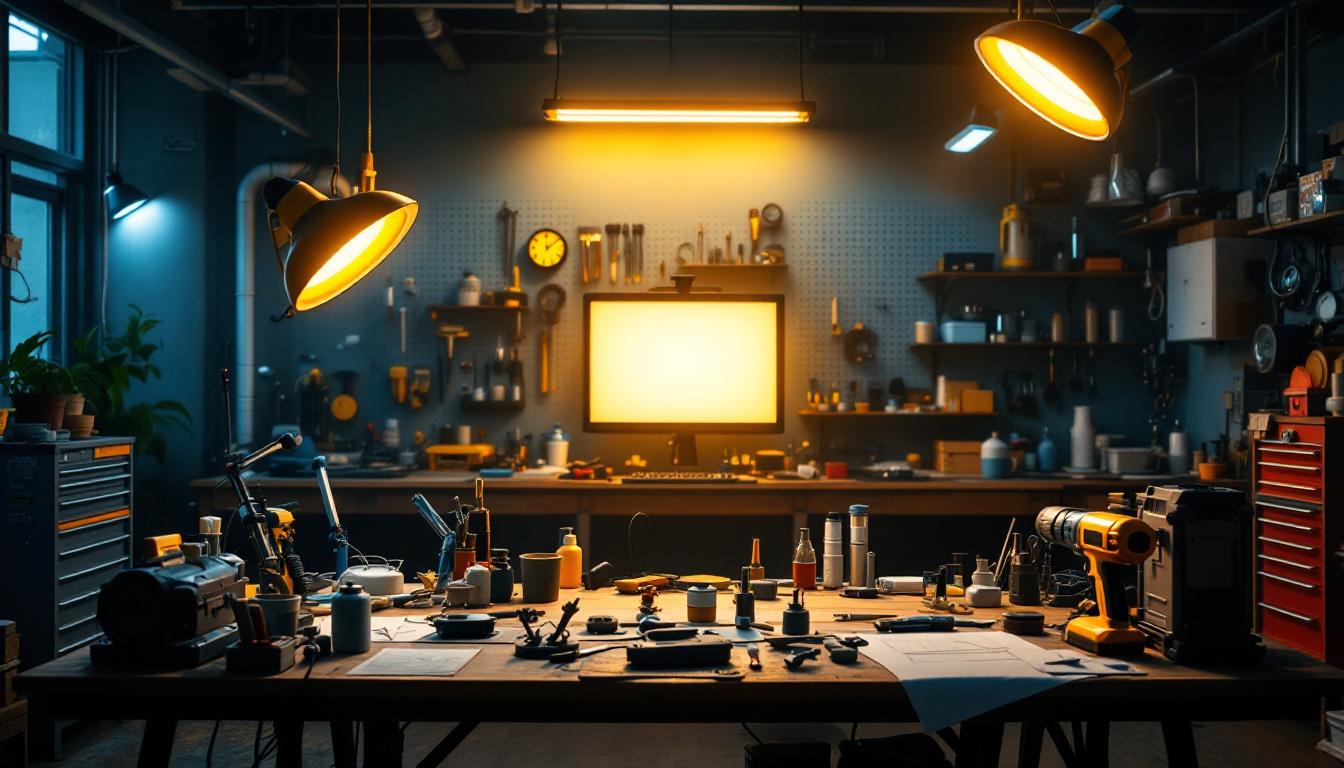
In the evolving world of horticulture and indoor gardening, grow lights have become essential tools for achieving optimal plant growth. As a lighting contractor, understanding the science behind these lights is crucial for providing clients with the best solutions tailored to their specific needs. This article delves into the various types of grow lights available, their applications, and the underlying principles that make them effective.
Grow lights come in various forms, each designed to cater to different plant species and growth stages. Familiarity with these types allows lighting contractors to recommend the most suitable options to their clients.
LED grow lights have gained immense popularity due to their energy efficiency and longevity. These lights emit a spectrum of light that can be tailored to the specific needs of plants, making them ideal for both vegetative and flowering stages. The ability to adjust the light spectrum allows for enhanced photosynthesis, which is crucial for plant health.
Moreover, LED lights produce minimal heat, reducing the risk of burning plants and allowing them to be placed closer to the foliage. This feature is particularly beneficial in confined spaces where maximizing light exposure is essential. In addition to their adjustable spectrum, many modern LED grow lights come equipped with smart technology that allows users to control light intensity and timing through mobile apps, providing a level of convenience and customization that was previously unavailable.
Fluorescent grow lights are another common choice, especially for seedlings and young plants. They are available in various forms, including T5, T8, and compact fluorescent bulbs. These lights are relatively inexpensive and provide a balanced spectrum, making them suitable for starting plants indoors.
While fluorescent lights are not as energy-efficient as LEDs, they still offer a good balance between cost and performance. Their cooler operating temperature also makes them safe for use in close proximity to plants. Additionally, fluorescent lights are often favored for their ability to cover a larger area with a softer light, which can be beneficial for growing a variety of plants together. Their versatility makes them a popular option for hobbyists and commercial growers alike, as they can be easily integrated into different setups, from small indoor gardens to larger greenhouse operations.
HID lights, including metal halide and high-pressure sodium bulbs, are known for their powerful output and effectiveness in large grow operations. Metal halide bulbs emit a blue spectrum, which is ideal for vegetative growth, while high-pressure sodium bulbs produce a red spectrum, promoting flowering and fruiting.
Despite their effectiveness, HID lights consume more energy and generate significant heat, necessitating proper ventilation and cooling systems. Understanding these characteristics helps contractors advise clients on the best setup for their specific growing environments. Furthermore, many growers opt for a dual setup, using metal halide bulbs during the vegetative phase and switching to high-pressure sodium bulbs as plants transition to flowering. This strategy maximizes growth potential and yields, making HID lights a staple in professional horticulture. Additionally, advancements in reflector technology have improved the efficiency of HID systems, allowing for better light distribution and reduced energy waste, which is a critical factor for growers looking to optimize their operations.
Understanding the science behind how plants utilize light is vital for lighting contractors. This knowledge enables them to make informed decisions about the types of grow lights to recommend and how to position them effectively.
Photosynthesis is the process by which plants convert light energy into chemical energy, using it to produce food. This process relies heavily on specific wavelengths of light, primarily in the blue (400-500 nm) and red (600-700 nm) spectrums. Blue light supports vegetative growth, while red light encourages flowering and fruiting.
By providing a balanced spectrum that includes both blue and red light, contractors can help ensure that plants receive the optimal conditions for growth. Many modern grow lights, particularly LEDs, allow for customizable spectrums to meet these needs.
Light intensity is another critical factor in plant growth. Different plants have varying light requirements, which can be categorized as low, medium, or high light needs. Understanding these requirements allows contractors to tailor lighting solutions that promote healthy growth without causing stress to the plants.
In addition to intensity, the duration of light exposure—known as photoperiod—plays a significant role in plant development. Most plants require a specific light cycle to thrive, with some needing longer periods of light during the vegetative stage and shorter periods during flowering. Contractors should consider these factors when designing lighting systems for their clients.
Different growing environments and plant types necessitate specific lighting solutions. A thorough understanding of these applications enables contractors to provide tailored advice to their clients.
Indoor gardens and hydroponic systems often require precise lighting solutions to simulate natural sunlight. LED grow lights are particularly well-suited for these environments due to their energy efficiency and customizable spectrums. They can be adjusted to provide the right light intensity and duration for various plant species.
In hydroponic setups, where plants are grown in nutrient-rich water rather than soil, consistent light exposure is vital for maximizing growth. Contractors should emphasize the importance of selecting lights that can maintain the necessary spectrum and intensity throughout the growth cycle.
In commercial greenhouse operations, the choice of grow lights can significantly impact productivity and profitability. HID lights are often favored for their high output and effectiveness in large spaces. However, the increasing popularity of LED technology is changing the landscape, as these lights offer long-term cost savings and reduced energy consumption.
When advising clients in the greenhouse sector, contractors should consider factors such as the size of the operation, the types of plants grown, and the available budget. Customizing lighting solutions to meet these needs can enhance overall efficiency and crop yield.
Specialty applications, such as growing rare or delicate plant species, may require unique lighting solutions. In these cases, contractors should be prepared to explore advanced options, including full-spectrum LED lights that mimic natural sunlight more closely.
Additionally, some plants may benefit from specific light wavelengths that promote unique growth characteristics. Understanding these nuances allows contractors to provide specialized recommendations that cater to their clients’ unique needs.
Proper installation and maintenance of grow lights are essential for ensuring optimal performance and longevity. Lighting contractors should be equipped with knowledge and skills to address these aspects effectively.
When installing grow lights, it is crucial to consider the height and positioning of the fixtures. Lights should be placed at appropriate distances from the plants to prevent heat stress while ensuring adequate light intensity. Additionally, the use of adjustable mounting systems can provide flexibility for different growth stages.
Contractors should also pay attention to the electrical requirements of the lighting systems, ensuring that circuits can handle the load without risk of overheating or failure. Proper wiring and safety measures are paramount in creating a safe and effective lighting environment.
Regular maintenance of grow lights is essential for ensuring their efficiency and longevity. This includes cleaning the fixtures to remove dust and debris that can block light output, as well as checking for any signs of wear or damage.
Contractors should also educate clients on the importance of monitoring light output and replacing bulbs as needed. In the case of LED lights, understanding the expected lifespan and performance characteristics can help clients make informed decisions about when to upgrade or replace their systems.
The field of grow lighting technology is continuously evolving, with new advancements emerging regularly. Staying informed about these trends can provide contractors with a competitive edge in the market.
Smart lighting systems are becoming increasingly popular in the horticulture industry. These systems utilize sensors and automation to adjust light intensity and duration based on real-time environmental conditions. This level of control can optimize plant growth while reducing energy consumption.
Contractors should consider integrating smart technology into their lighting solutions, as it can enhance the user experience and improve overall efficiency. Educating clients about the benefits of smart systems can also position contractors as forward-thinking professionals in the industry.
As LED technology continues to advance, new developments are emerging that improve efficiency and light quality. Innovations such as quantum dot technology and improved heat dissipation methods are enhancing the performance of LED grow lights, making them even more effective for plant growth.
Contractors should stay abreast of these advancements to provide clients with the latest and most effective lighting solutions. By offering cutting-edge technology, contractors can differentiate themselves in a competitive market.
Understanding the science behind grow lights is essential for lighting contractors aiming to provide effective solutions for their clients. By familiarizing themselves with the various types of grow lights, the principles of plant growth, and the specific applications of lighting systems, contractors can offer tailored recommendations that enhance plant health and productivity.
As the industry continues to evolve, staying informed about new technologies and trends will ensure that contractors remain at the forefront of the horticultural lighting market. By combining knowledge with practical installation and maintenance skills, lighting contractors can build lasting relationships with clients and contribute to the success of their growing endeavors.
Ready to elevate your lighting game? At LumenWholesale, we provide lighting contractors like you with the highest quality grow lights that meet and exceed industry standards. Say goodbye to the hassle of dealing with middlemen and inflated prices. Our spec-grade lighting products come at unbeatable wholesale prices, combined with the convenience of free shipping on bulk orders. Whether you’re outfitting a commercial greenhouse or an indoor garden, our selection ensures you get the most reliable and high-performance lighting solutions. Take the first step towards enhancing plant health and productivity for your clients. Wholesale Lighting at the Best Value awaits you at LumenWholesale. Don’t settle for less—choose the perfect blend of quality, affordability, and convenience today.

Discover why lighting contractors should prioritize barn fixtures in their projects.

Discover why top-rated LED shop lights are the essential component missing from your lighting projects.

Discover essential insights for lighting contractors in this comprehensive guide to exterior light poles.

Illuminate your landscaping projects with expert insights into LED lighting.